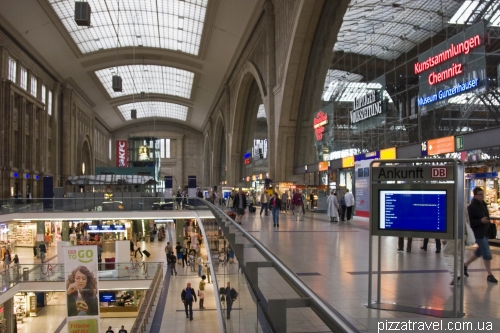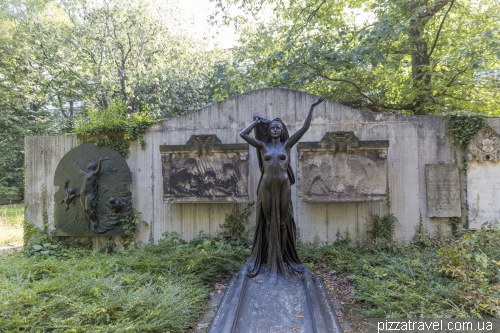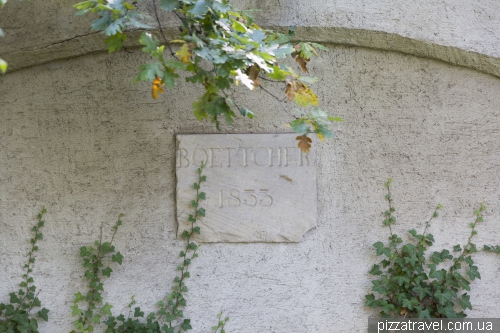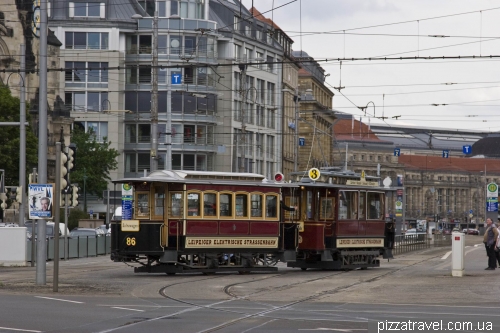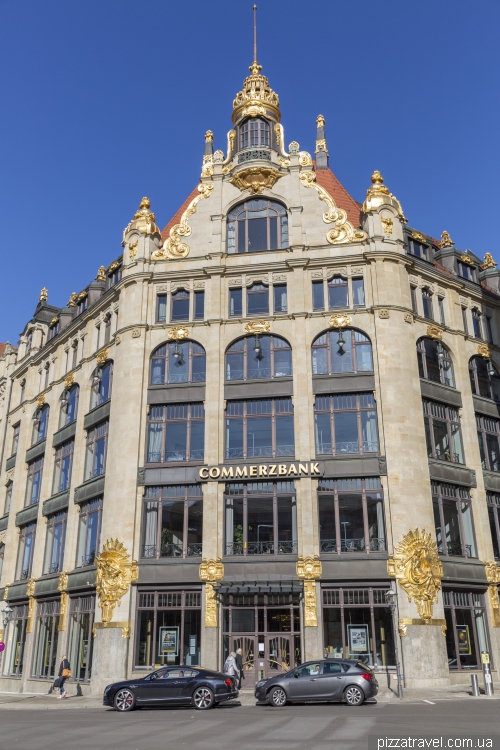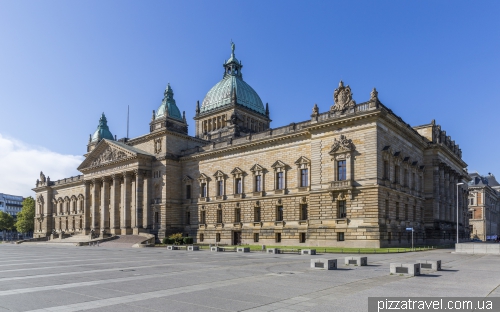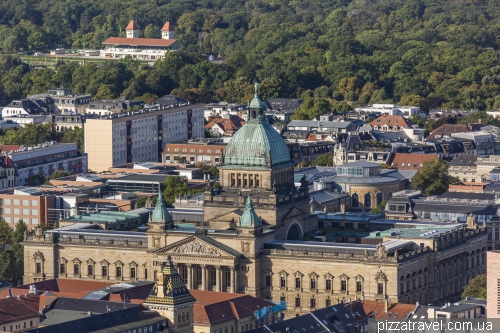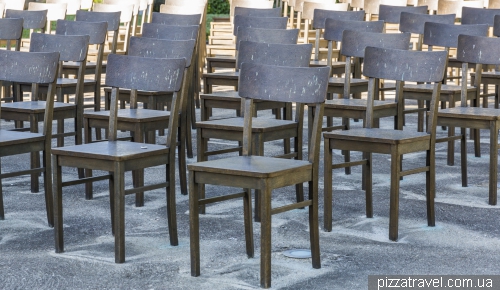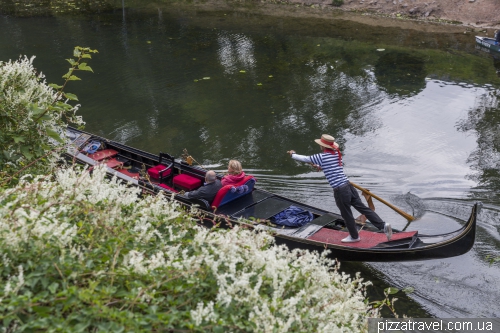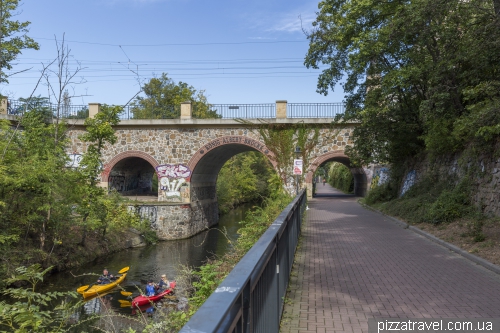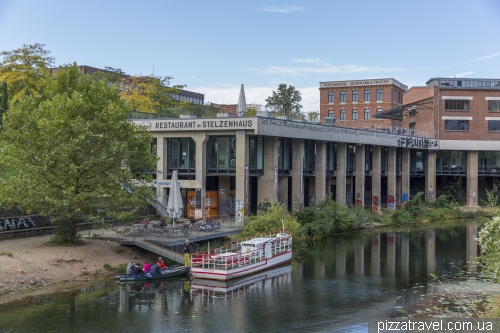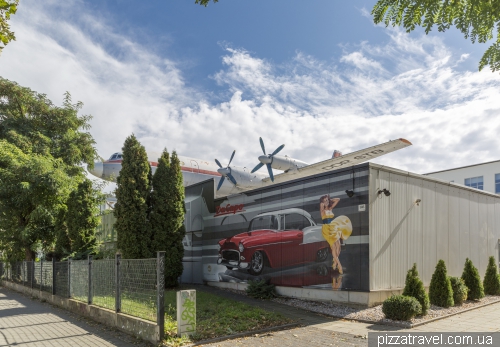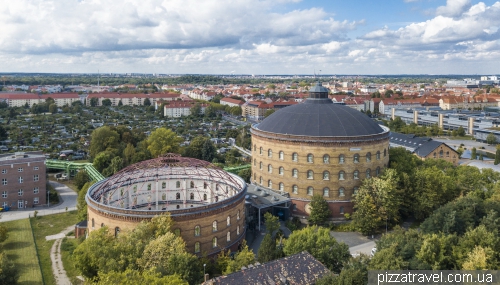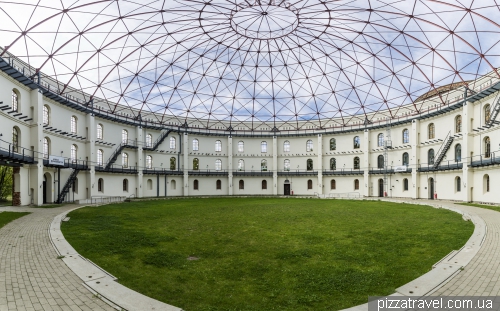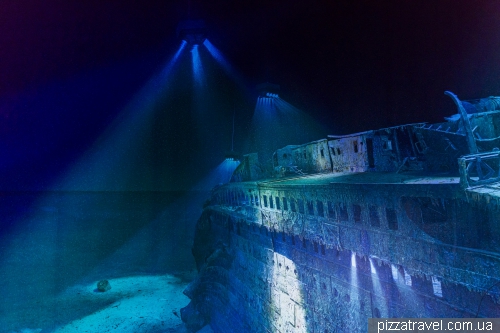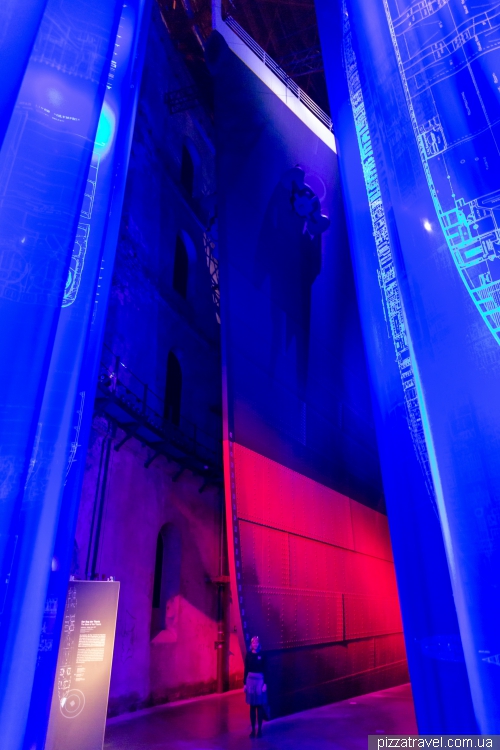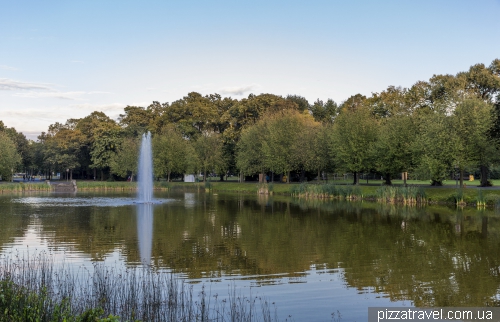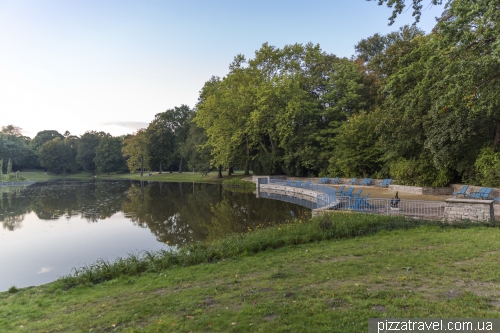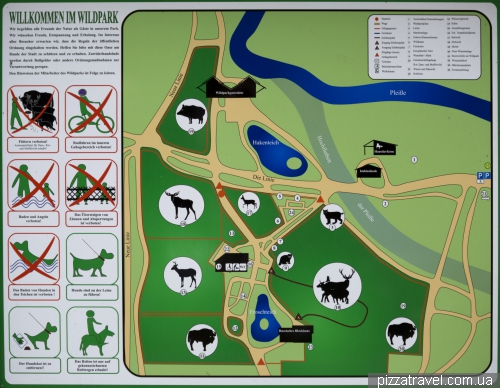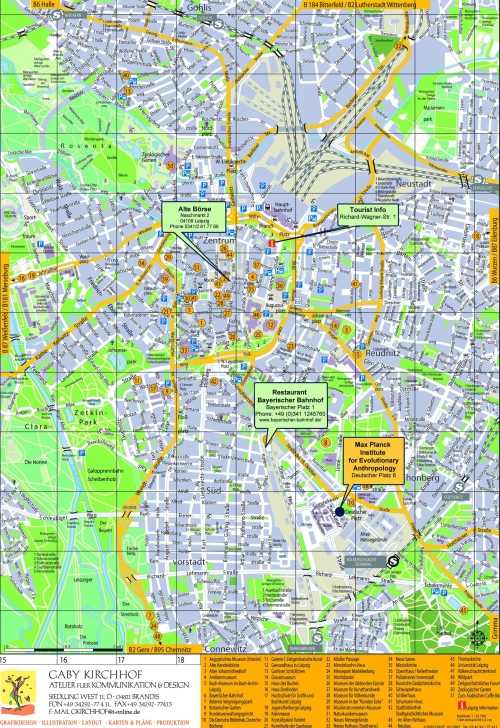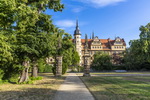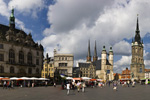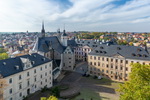Leipzig is fairly a large city by German standards and a major transport hub. During World War II it was heavily damaged and the city center was totally destroyed. Therefore, there is no real "old town" in Leipzig. However, as in the other cities of the country, now it is not noticeable.
Tourists arrives to a railway station, which is one of the biggest in the world and the largest in Europe by floor size (83,460 m2). Its length is 298 meters and in addition to 24 platforms inside located hundreds of shops and restaurants.
From the train station, I would advise not to go directly to the center, but to the August square (Augustusplatz).
The Krochhaus is the first high-rise building in Leipzig (1927/28). Now it hosts the Egyptian museum.
The building of the university (to the right) is more like some modern church.
In addition to the Opera House, Mendebrunnen fountain and concert hall "Gewandhaus" here stands skyscraper of TV-MDR with an observation deck at the top (open from 9 am until almost midnight, entrance 3 euros). When you first visit a new city is always helpful to look at it from above.
This house was built in 1972 and at that time was the tallest apartment house in the GDR.
High-rise building in the center - the hotel where we spent the night - The Westin Leipzig (booking.com).
In the distance can be seen the Monument to Battle of the Nations, one of the city's main attractions.
And after visiting the observation deck it is time to walk in the old town. Near the August square we visited the old cemetery of St. John (Alter Johannisfriedhof).
Leipzig has 3 types of trams: modern, old and very old, that's unusual
Near the August square stands St. Nicholas Church. It is known because here in 1989 began the first peaceful demonstrations against the Soviet regime.
And now old town
Leipzig has a lot of decorations on the buildings.
Old Town Hall was built in 1556-1957 and is an good example of Renaissance architecture. Inside is a museum.
To the left from the Old Town Hall in the passage you can find wine restaurant Auerbachs Keller, which was described by Goethe in "Faust". On the internet you can find information that it is one of the most famous restaurants in the world. It's not true.
Near the market square is the Church of St. Thomas (Thomaskirche). It became famous thanks to Johann Sebastian Bach, who lived in the city for a long time and served as cantor of a famous boys' choir. The tomb of the composer is inside the church.
Not far from the church you can see another 2 interesting buildings: the New Town Hall and the Federal Regional Court. Both were built in the late '19 and symbolized the economic prosperity of the city.
Holocaust memorial (Zentralstraße 4)
About a kilometer from the New Town Hall, at the Bavarian square, there is another interesting place. Bavarian train station was opened in 1842 and is the oldest in the country.
An interesting and little-known place is the canal of Karl Heine Canal, about 3 km long. It was opened in 1864 and was planned as a navigable one. But came to complete desolation in the times of the GDR and was cleared only in the 90s. We strolled along the canal from Erich-Zeigner-Allee 45.
Back to center we returned along Karl-Heine-Straße Street, it's a popular hister's place with a lot of graffiti and cafes. Like the canal, this street is located in the middle of the Plagwitz artistic quarter, where various cultural institutions are located.
At the address Richard-Lehmann-Straße 114 there is a Panometer (the word is formed from two words: PANOrama and gasoMETER). In the former gas storage of the 19th century now located the largest panoramic image in the world. At the moment of our visit was Titanic.
The place is very interesting. Under certain ligh, there is really effect of presence.
In addition to the picture, there is also a small exhibition.
The major green area in the city is Clara Zetkin Park.
Find the tree of wishes (Glücksbaum) near the Saxony bridge (Sachsenbrücke).
In the southern part of the city you can walk in the Wildlife park (tram 9). It's a zoo, but located in the woods and the entrance is free.
In the evening visit Karl-Liebknecht-Straße 36. There is the most famous neon sign in East Germany - Family with spoons (Löffelfamilie). It was practically destroyed in 1990, but in 2009, enthusiasts carried out the restoration.
And you should definitely visit another famous place in Leipzig - a monument to the battle of nations. The battle took place in 1813 between the armies of Napoleon and allies (Russia, Sweden, Prussia and Austria). In 1812 Napoleon's army has not been completely destroyed in Russia. Napoleon retreated but still had significant power.
The decisive battle took place near Leipzig. Both sides suffered heavy losses, but it was the end of Napoleon's empire. He returned to France, where abdicated six month later. For the Germans, this was a major battle in the struggle for the liberation from France, so it is not surprising that they erected such a grand monument.
It's interesting that in the 19th century throughout Germany began to establish huge monuments to raise the morale of the country after the French occupation. Such as Monument to Kaiser Wilhelm I and Hermann Monument.
You can get here by trams 2 or 15, entrance price is 6 euros. Upstairs there is an observation deck, but you need go by foot and it's not easy.

The view from the observation deck at the Monument to the Battle of the Nations in Leipzig ©Yuriy Buriak
This great castle, in fact is a chapel in the middle of a huge cemetery (Südfriedhof) near the monument.
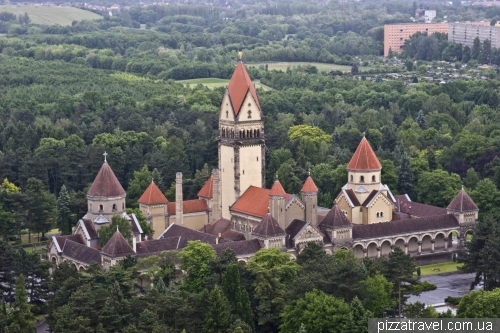
The view from the observation deck at the Monument to the Battle of the Nations in Leipzig ©Yuriy Buriak

The view from the observation deck at the Monument to the Battle of the Nations in Leipzig ©Yuriy Buriak
Leipzig also has a cool zoo, but we did not visit it, as according to photos and description it is very similar to Hannover zoo, where we have been.
Here you can download the brochures about Leipzig with a map in different languages.
Getting there: Take the train to Leipzig Hbf, use bahn.de. The closest airport is Leipzig/Halle Airport.



